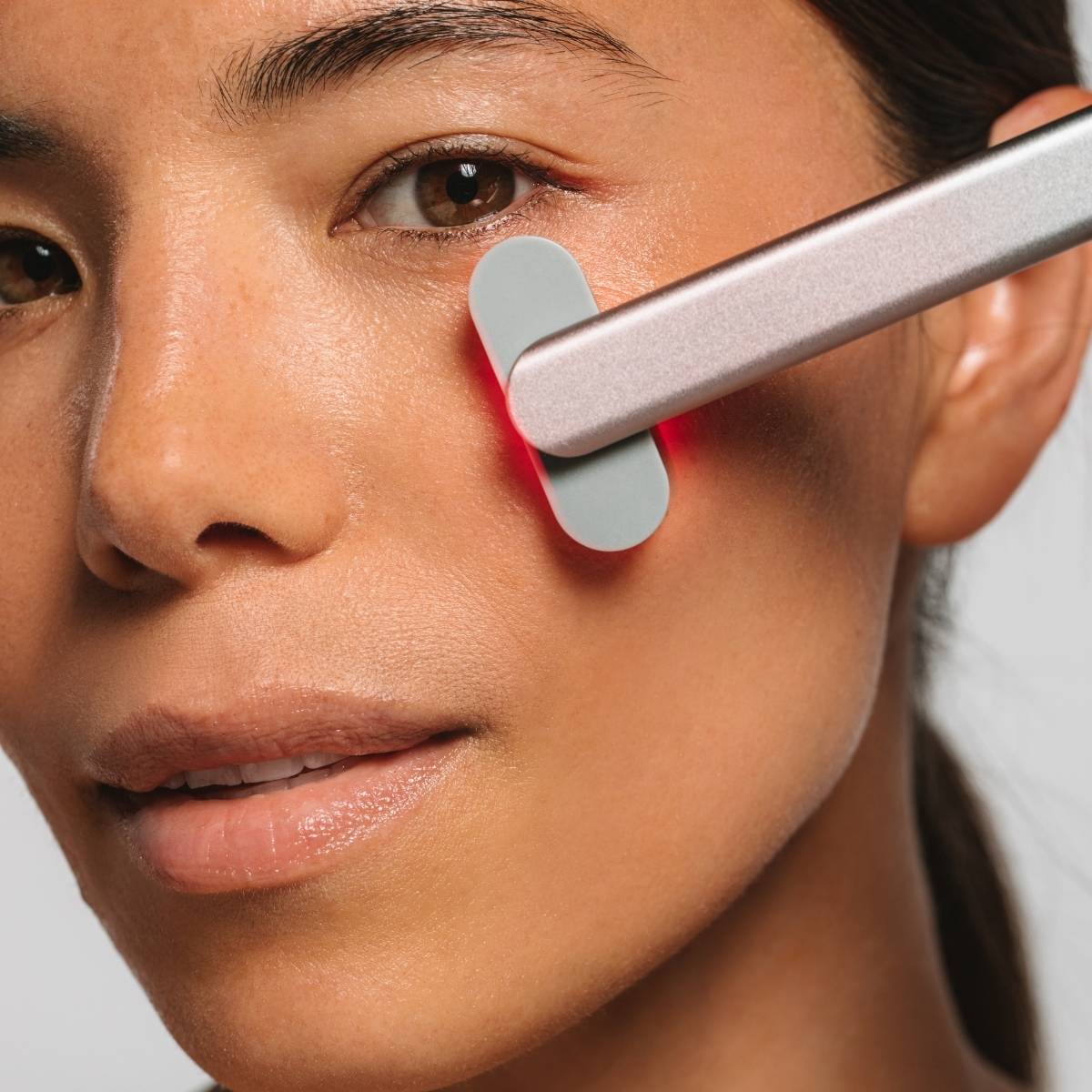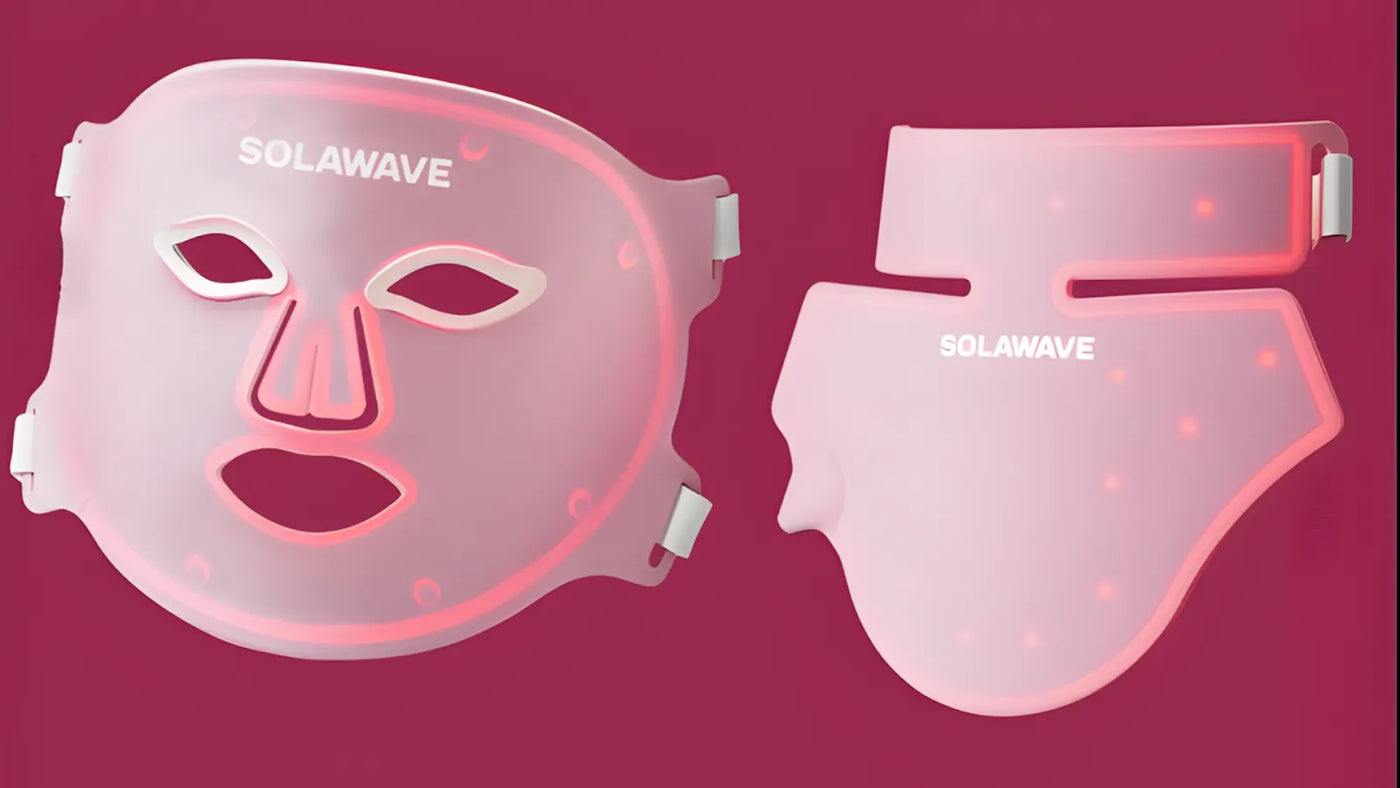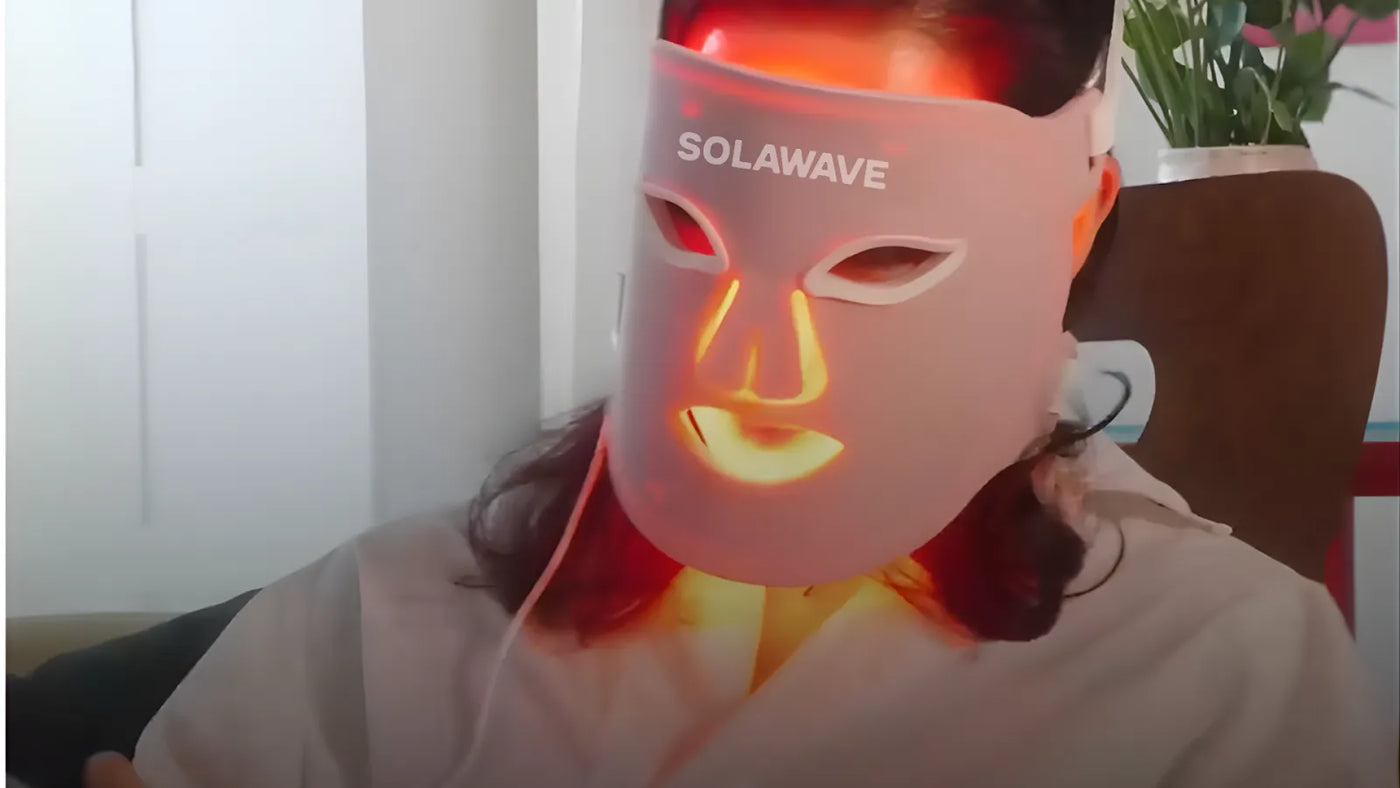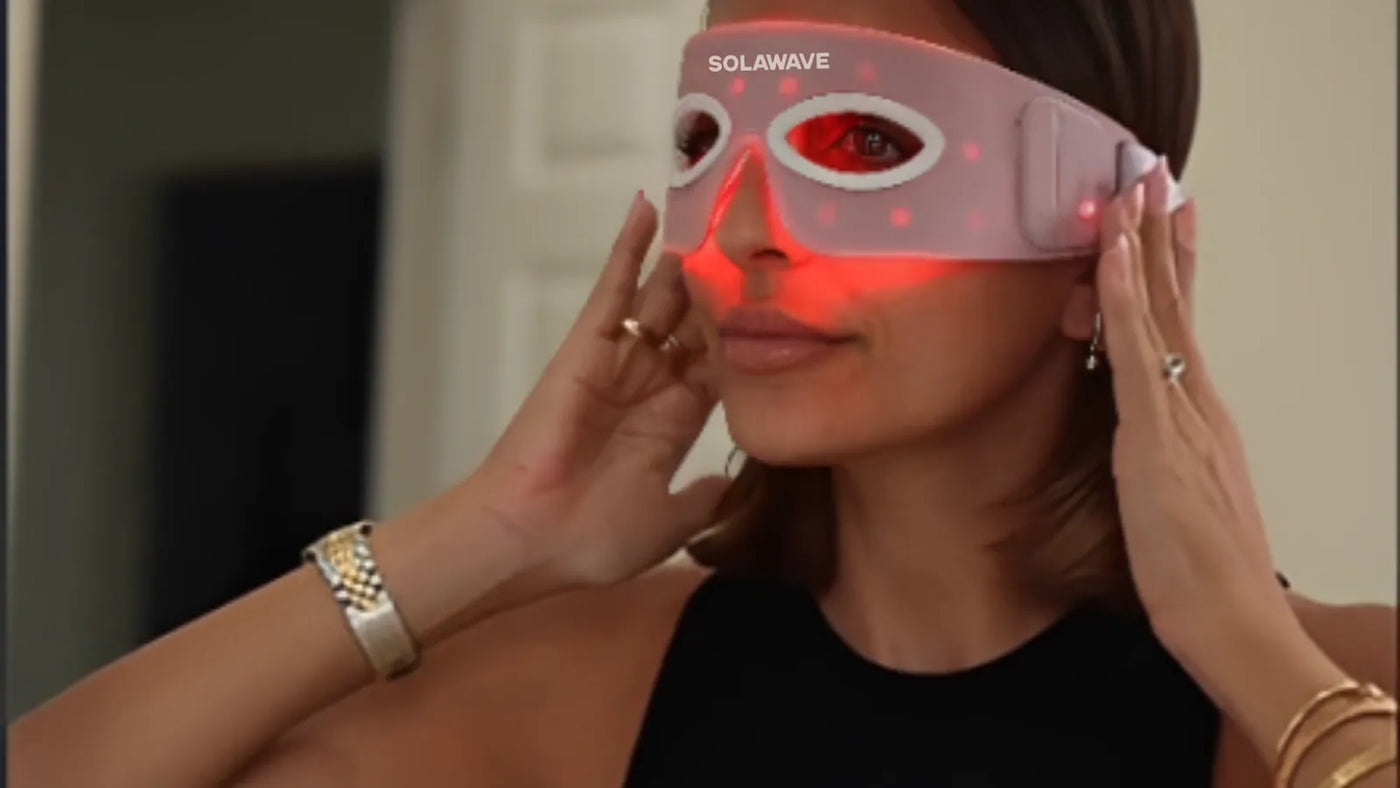

Red Light Therapy, Explained
Curious about how Red Light Therapy can fit into your skincare routine? You’re not alone. This gentle, non-invasive treatment is gaining popularity for its ability to support healthier-looking skin and address common concerns like fine lines, uneven tone, and visible redness. Whether you’re new to the world of Red Light or looking to get more out of your at-home device, here's Red Light Therapy explained, including how this technology works can help you make the most of your self-care routine.
Introduction to Red Light Therapy
What Is Red Light Therapy?
Red Light Therapy, also known as photobiomodulation, is a gentle, non-invasive skincare treatment that uses specific wavelengths of visible red light to support healthier-looking skin. This technology delivers low-level light energy to your skin, helping to refresh your complexion and enhance your natural glow with visible skin rejuvenation. Unlike harsh treatments, Red Light Therapy is designed to be soothing and safe for regular use at home or in professional settings.
Brief History and Growing Popularity
Originally developed for plant growth experiments by NASA, Red Light Therapy has evolved into a popular skincare solution. Over the years, it’s gained attention for its ability to support skin health and appearance without downtime or discomfort. Today, you’ll find Red Light Therapy in spas, dermatology offices, and increasingly in at-home devices, making it more accessible than ever.
How Red Light Therapy Fits Into Modern Skincare
Red Light Therapy easily fits into your daily skincare routine, whether you’re looking to refresh your skin’s appearance or complement other treatments. Many women use it alongside their favorite serums and moisturizers to boost their results. With the rise of user-friendly at-home devices, you can now enjoy the benefits of Red Light Therapy on your own schedule, making it a convenient addition to your self-care routine.
How Red Light Therapy Works
The Science Behind Red Light Therapy
Wavelengths and Light Penetration
Red Light Therapy uses wavelengths typically between 630 and 660 nanometers, which are visible to the human eye as red light. These wavelengths are carefully chosen because they can reach the deeper layers of your skin without causing damage or discomfort. The light energy penetrates the outer layer of your skin (the epidermis) and reaches the underlying tissue (the dermis), where it can have a positive impact on your skin’s appearance.
How Red Light Interacts With Skin Cells
When your skin absorbs red light, it helps energize your cells, supporting their natural processes. This energy can encourage your skin to produce more collagen—a protein that keeps your skin looking firm and smooth. By supporting healthy collagen production, Red Light Therapy helps your skin look refreshed and more radiant over time.
What Happens During a Red Light Therapy Session?
During a session, you simply expose your skin to the red light using a specialized device, such as a wand or face mask. The treatment is painless and doesn’t involve any heat or discomfort. Most sessions last between 5 and 20 minutes, depending on the device and your skincare goals. You can use Red Light Therapy on clean, dry skin, and many devices are designed to be used several times a week for best results.
Key Benefits of Red Light Therapy for Skin Appearance
Supporting Healthy Collagen Production
Red Light Therapy helps your skin support its natural collagen production. Collagen is essential for keeping your skin looking smooth and supple. With regular use, you may notice your skin feels firmer and looks more vibrant.
Reducing the Look of Fine Lines and Wrinkles
By supporting collagen, Red Light Therapy can help soften the appearance of fine lines and wrinkles. Many women find that their skin looks smoother and more refreshed after consistent use, making it a popular choice for addressing visible signs of skin aging.
Improving Skin Tone and Texture
Red Light Therapy can help even out your skin tone and improve texture. If you’re dealing with dullness or rough patches, regular sessions may help your skin look brighter and feel softer.
Calming the Appearance of Redness and Zits
This gentle therapy is also known for its calming effects. Red Light Therapy can help reduce the look of redness and soothe the appearance of zits, making it a great option for anyone looking to achieve a clearer, more balanced complexion.
The Best At-Home Red Light Therapy Devices
Types of Devices Available (Wands, Masks, Panels)
When it comes to at-home Red Light Therapy, you have several options to fit your lifestyle and skincare goals. Wands are compact and easy to use, making them great for targeting specific areas like your forehead or around your mouth. Masks offer full-face coverage and are designed for hands-free treatments, so you can relax while the device does the work. Panels are larger and can be used on your face or body, making them ideal if you want to treat multiple areas at once.
How to Choose the Right Device for Your Needs
Choosing the right Red Light Therapy device depends on your routine and what you want to achieve. If you’re looking for convenience and want to treat your entire face at once, a mask might be your best bet. Wands are perfect for spot treatments or if you prefer a more hands-on approach. Consider how much time you want to spend, the areas you want to target, and whether you prefer a device you can use while multitasking.
Best Red Light Therapy Face Mask: Wrinkle Retreat Light Therapy Face Mask
Features and How It Works
The Wrinkle Retreat Light Therapy Face Mask is designed to deliver Red Light Therapy evenly across your entire face. It uses 66 medical-grade LEDs that emit wavelengths optimized for supporting healthy collagen production and improving the look of fine lines and wrinkles. The mask is lightweight, flexible, and cordless, so you can move around comfortably during your session. With a simple one-button operation and a 10-minute treatment time, it’s easy to fit into your daily routine.
Who It’s Best For
This mask is ideal if you want a convenient, hands-free way to support healthier-looking skin at home. It’s especially helpful for people who want to address multiple concerns at once—like fine lines, uneven tone, and visible redness—without spending a lot of time or effort. If you’re looking for a device that’s easy to use and fits seamlessly into your self-care routine, the Wrinkle Retreat Light Therapy Face Mask is a great choice.
Best Red Light Therapy Eye Mask: Radiant Renewal Eye Recovery Pro
The Eye Recovery Pro Red Light Therapy Eye Mask is designed specifically to target the delicate skin around your eyes, an area that often shows early signs of skin aging like fine lines, puffiness, and dark circles. This lightweight, flexible mask uses advanced Red Light wavelengths to support healthy collagen production and refresh the look of tired eyes. With a comfortable, contoured fit, it sits gently over your eye area, allowing you to relax during each session.
The Eye Recovery Pro is cordless and easy to use, featuring a simple one-button operation and a quick treatment time—making it easy to add to your daily routine. If you’re looking for a focused solution to help your eye area look brighter, smoother, and more rested, this mask is a smart addition to your at-home skincare lineup.
Best Red Light Therapy Body Mask: Neck & Chest Rejuvenating Mask
The Neck & Chest Rejuvenating Mask is designed to bring the benefits of Red Light Therapy to two areas that often show visible signs of skin aging—the neck and chest. This flexible, hands-free mask uses targeted Red Light wavelengths to support healthy collagen production and help your skin look smoother and more radiant. With its lightweight, contoured design, the mask comfortably wraps around your neck and décolletage, delivering even coverage and allowing you to move freely during each session.
The device features a simple, one-touch operation and a quick treatment time, making it easy to fit into your daily self-care routine. If you want to address the look of fine lines, uneven tone, or sun damage on your neck and chest, this mask offers a convenient and effective way to help these areas appear firmer and more refreshed.
How to Use Red Light Therapy at Home
Step-by-Step Guide for Safe and Effective Use
-
Start with clean, dry skin to help the light reach your skin cells more effectively.
-
Place your device—whether it’s a mask, wand, or panel—so the light covers the areas you want to treat.
-
Turn on the device and follow the recommended treatment time, usually around 10 minutes for a mask.
-
Relax and let the device do the work. Most masks are hands-free, so you can sit back or multitask.
-
After your session, continue with your regular skincare routine, applying any serums or moisturizers you love.
Tips for Getting the Most Out of Your Device
-
Use your device consistently, following the recommended schedule (often 3-5 times per week).
-
Make Red Light Therapy part of your evening or morning routine for best results.
-
Store your device in a convenient spot so you remember to use it regularly.
-
Pair your sessions with relaxing activities, like listening to music or meditating, to make it a self-care ritual.
How Often Should You Use Red Light Therapy?
For most at-home devices, using Red Light Therapy three to five times a week is recommended. Consistency is key—regular sessions help you see the best results over time. Always refer to your device’s instructions for specific guidance.
What to Expect: Results and Timeline
How Long Until You Notice Changes?
Many women start to notice subtle improvements in their skin’s appearance within a few weeks of regular use. You might see your skin looking more radiant, with a smoother texture and less visible redness.
What Results Are Typical?
With continued use, you can expect your skin to look firmer and more refreshed. Fine lines may appear softer, and your overall complexion can look brighter and more even. Before-and-after photos from real users often show a visible difference in the look of fine lines, skin tone, and clarity after several weeks of consistent use.
Factors That Can Affect Your Experience
Your results can depend on several factors, including how often you use your device, your skin type, and your overall skincare routine. Staying consistent and pairing Red Light Therapy with good skincare habits will help you get the most noticeable benefits.






















